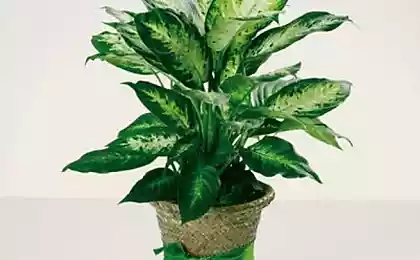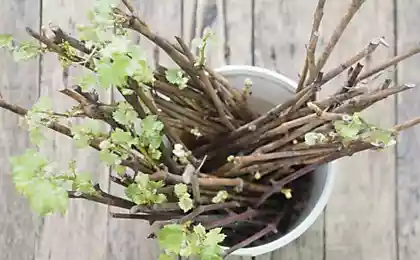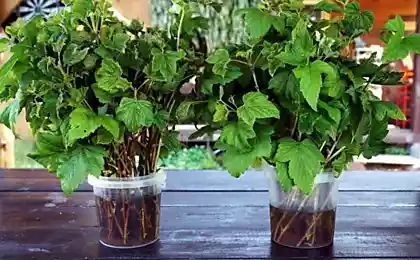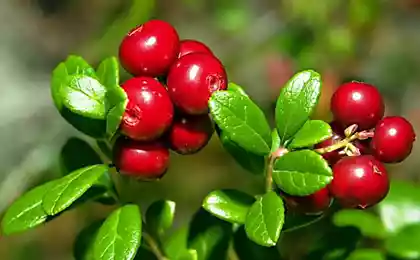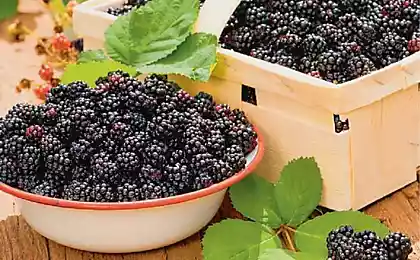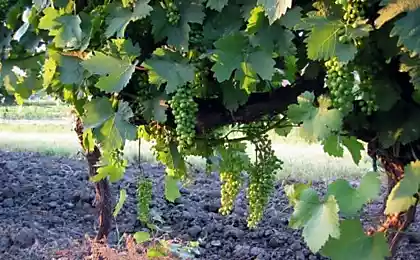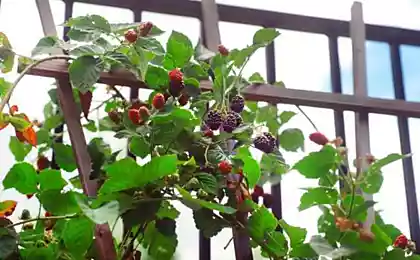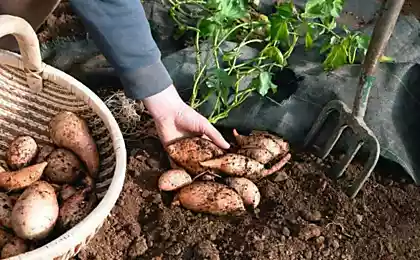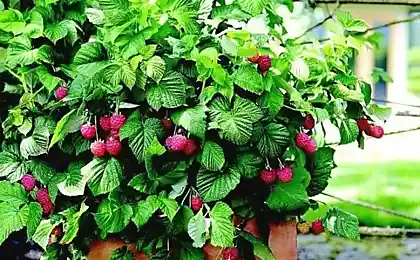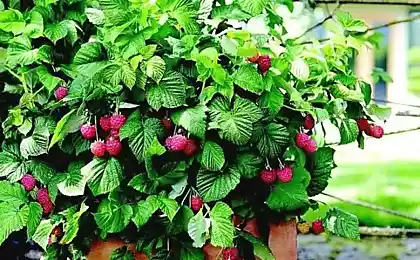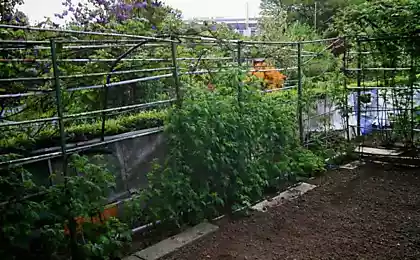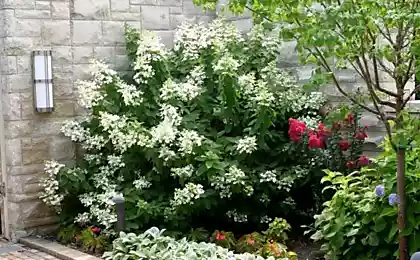454
Plants from green cuttings

Green cuttings successfully propagated cherry, plum, peach, currants, grapes, sea buckthorn, roses, clematis, Magnolia, Actinidia, viburnum, dwarf rootstocks of Apple, many other fruit, ornamental and flower crops.
Preparing cuttings during the growing season, gardeners can grow their own planting material, and after a harsh winter, in case of death of the aboveground parts, own-rooted plants propagated so quickly recover from the root or basal shoots, which relieves the gardener from having to find a new favorite plant varieties.
Having a plant for rooting of green cuttings with an area of 5 m2, can be grown 400 to 450 plants. When the device requires two conditions: high humidity and constant smazannost the surface of the leaves of green cuttings, which ensures the so-called turgor condition.
For rooting you can adjust the spring film greenhouse for growing seedlings, Dobrodomov their irrigation system. But it is better to engage in the construction of greenhouses with their hands, preparing all necessary for the cultivation of cuttings.
For the most legkousvojaemyh forms with hairy leaves in these teplychkah to use household electroclinical air, which in the hot season barely blowing to operate in continuous mode. The sheet surface several times a day must be moistened prior to its complete wetting with a sprayer or a spray more convenient to have fog.
Special attention should be paid to compliance with safety regulations: while carrying out any work inside the greenhouse it is necessary to de-energize the motors moisturizers.
High moisture content in the rooting zone for 7 — 10 days after planting and can be maintained using gauze canopy or covering material type lutrasil lay directly on top of the planted cuttings. If necessary, the gauze during the day, several times moisturize from the sprayer.
Equipment for stationary systems vnutricerepnogo irrigation you can use the electric sprayers, connecting them to the rod with 2 — 3 sprays spaced at 1.0 — 1.2 m from each other. The substrate is not swaps, the installation in manual or automatic mode include no more than 20— 30 sec intervals, variable depending on the intensity of solar radiation from 5 — 7 60 — 70 min.
In installations with a simplified system of humidity control to avoid podvedenie green cuttings is possible only if the temperature in the rooting zone will not exceed 27 to 30°, so place the greenhouse on the plot so that at midday they would be protected from direct sunlight by the shadow of trees or buildings.
Positive effect whitening of the film slaked lime and removable patenaude materials — burlap, etc. However, with the formation of root tubercles, in most cases with the 7— 10th day, green cuttings become more picky about the lighting conditions and the use of dense pritenyayut materials it is necessary to limit or even completely eliminate.
The temperature in the cultivation installations at this time reduce, increasing ventilation. It is better if ventilation is provided in the upper part of the film shelters (for example, a removable roof), as a direct hit of dry outside air into the cuttings dries them out and kills.
Optimal humidity and temperature for successful rooting of cuttings Selah little. It is important to choose the right culture and varieties. For example, rooting cultivars of Apple, pear, apricot and cherry is bad, but cherry, plum, plum culture, on the contrary, legkousvoyaemye, but they have varieties of Uko - redeemest different.
Among cherry cultivars in this sense, the especially good Oblacinska, the Latvian Low Petrakivka, meteor, Red, Fertile, Maksimovskaya, Blizzard, Apuhtina, Elegant, Karmaleeva, Vladimir, June, Thumbelina, Estonia, and among plum and cherry-plum — Dessert Early, Suleja, Red Dessert, Apricot Aroma, Peach, Stenley, Hiawatha, Opatha, Greengage Pink, Opal and many others.
Legkousvojaemyh yield of these varieties is quite high. By the way, for the southern zone for productivity and resistance to kokkomikoza primarily recommend the variety meteor.
Green cuttings of cherry. Cuttings of the apical part of the shoot grassy area is not removed.Have legkousvojaemyh forms of cuttings harvested, and the apical zone and with the underlying. The varieties with spaced internodes and remove the two lower sheet, extra long — one. The shears cut a straight line. Steel plate from stone is not truncated.
Plants from green cuttings green cuttings That are well rooted, they need time to prepare. For each plant, the timing may be different as it depends on climatic conditions (early or late spring, etc.).
Cuttings of plum, cherry, honeysuckle edible, lilac, peonies, filberts, hazelnuts are harvested in a short period of intensive plant growth in length and its flowering (June — July for the middle band).
At the end of the intensive growth of plants (June), cut the cuttings from dwarf rootstock of Apple, gooseberry, sea buckthorn, mock orange (Jasmine).
Well rooted throughout the growing season green and woody cuttings of different currant, schisandra, Actinidia, willow, poplar.
Finally, there are plants, cuttings which can be planted at any time. This is rose, grape, Azalea, outlet strawberry and others.
Harvested cuttings in the morning when they are still full of moisture (dehydration for them — death). So as not to crush the wood, cut with a very sharp knife, the better the vaccination. Cut stalks on the bias line, leaving a few buds. The part of the stem, plant in the soil should be 4 to 6 mm below the last buds, the other end cut 2 — 4 mm above the kidneys.
Cut off the stalks should immediately treat growth substances such as IAA (well mixed with rutinum). No need to worry if some of the cuttings will fall off the leaves, and the Bud in the leaf axil will not be revealed and a new shoot appears.
If the handle will remain at least one leaf, by autumn he will have 3-5 roots 8-12 cm. Such cuttings it is best to grow in the hothouse, insulated for the winter. You can cover them half-liter or liter jars, and then covered with peat or sawdust 7-10 inches above the surface. Banks protect plants from damage, vyprevaniya and from rodents.
After two to two and a half months from the hothouse shoot the film. Well-rooted cuttings transplanted to the "new plantation" — a small field where they are grown to standard nursery stock.
For black currant and some clonal rootstocks of Apple trees is usually a year. For cuttings of cherry, plum, honeysuckle, gooseberries, red currants, Actinidia, chubushnika — two years. Chinese Magnolia vine spends in "school" two or three years, and coniferous cultures, such as arborvitae and spruce, canadian, — 4 — 5 years.
Now about the preparation of the soil. It needs to be breathable.
The best substrate is a mixture of peat and washed river sand granular in ratio of 1:1. There may be other compounds, such as a mixture of compost with sawdust and turf with earth or loam, and coarse sand (in equal amounts).
Diffused lighting need (this eliminates the possibility of burns), even, the leaves of one cutting do not Pricedale other. In bright, Sunny weather, the greenhouse air.
The air temperature in the greenhouse is 20 — 30°C, the soil temperature is 24 — 27°C.
A good influence on the growth of roots feeding. Research zonal Institute of horticulture in the Nonchernozem strip recommends immediately after the landing of the cuttings to bring the soil granular superphosphate (five grams per 1 sq. m), three to four weeks contribute 3 grams of nitrogen, phosphorus and potassium, and then spend two to three hours of intermittent spraying.
Six weeks after planting, make 9 g nitrogen, 4 g phosphorus, and 7 g of potassium per square meter (for active substance). Phosphate fertilizers dropped, nitrogen and potassium dissolve in water.
Should strictly follow the dosage. Studies found that the excess doses of superphosphate in excess of five grams per square meter leads to a sharp inhibition of root growth. For underfeeding is better than overfeeding.published
Source: secretdachi.ru






